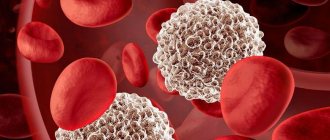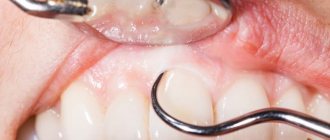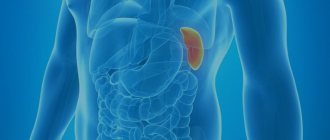Surgeon, coloproctologist
Skorkina
Irina Konstantinovna
14 years of experience
Doctor of the highest category, member of the European Society of Surgeons
Make an appointment
The infectious disease sepsis is very dangerous for humans. In the past, it was fatal in 80% of cases. Today, thanks to the achievements of modern medicine, this figure has decreased, but continues to remain quite high and amounts to 30-40%.
What is sepsis
What is sepsis in simple words? Sepsis (“rotting” in Greek) is a general infectious infection of the body, in which the infection spreads through the bloodstream. The disease does not affect a single organ, but the entire body.
Often sepsis becomes a continuation of the development of various local inflammations, for example, boils, phlegmon, abscess, meningitis caused by meningococcal infection, which can also lead to the development of meningococcal sepsis.
Patients with sepsis, as a rule, have immunity weakened by the primary inflammatory process. It is against the background of reduced protective functions of the body that the risk of developing sepsis, as a secondary inflammatory process, increases.
Causes of sepsis
Sepsis can be caused by most microorganisms known in epidemiology, including bacteria, viruses (including seasonal influenza viruses), fungi, and parasites. Typically, the infectious agent enters the body from the external environment. Under certain conditions, for example, with immunodeficiencies, the disease can develop from the natural, opportunistic flora of the body, which is normally present in every person.
The presence of infection in itself does not guarantee the development of sepsis. Additional conditions are needed that will lead to generalization of the process and a pathological response of the body. The likelihood of such events increases in the following cases:
- The patient's age is over 75 years.
- Performing surgeries or invasive procedures.
- Presence of injuries and burns.
- Immune system disorders - AIDS, cancer, chemotherapy, the need to use immunosuppressive therapy (for example, after organ transplantation), the need to take high doses of glucocorticosteroids.
- Long-term treatment in a hospital setting.
- Availability of catheters, cannulas, probes and other invasive devices.
- Pregnancy and childbirth.
- Chemical dependence - alcoholism, drug addiction.
- The presence of chronic diseases - chronic renal failure, respiratory failure, diabetes mellitus and much more.
Classification
Classification of sepsis is carried out according to several criteria:
According to the pace of development:
- fulminant – rapid development with the possibility of death within 1-2 days;
- acute – development duration up to 4 weeks;
- subacute – the duration of development of sepsis infection is 3-4 months;
- recurrent – characterized by alternating exacerbations and attenuation of the disease, lasting up to six months;
- chronic – lasting more than a year.
Forms of sepsis in adults of the secondary type according to the zone of localization of the primary focus:
- tonsillogenic - develops against the background of sore throats that were caused by staphylococci and streptococci;
- obstetric-gynecological – risk of development due to complications after abortion or childbirth;
- surgical sepsis - infection in the blood from a postoperative wound;
- pleuropulmonary – the primary focus is purulent lung diseases;
- urosepsis - the organs of the urinary system become foci;
- odontogenic – associated with diseases developing in the dental system;
- skin – purulent skin diseases, as well as deep damage to the skin (burns, infected wounds, etc.);
- otogenic – develops against the background of ear diseases (purulent otitis media, for example);
- rhinogenic – develops against the background of the spread of infections in the body from the nasal cavity;
- peritoneal – localization of primary foci in the abdominal organs.
Separately, neonatal sepsis should be highlighted - a systemic infectious disease in newborns during the first 28 days of life. The source is the formation of a purulent process in the tissues and vessels of the umbilical cord.
Complications of sepsis
The most severe form of sepsis is shock. It can occur in any form of the disease. When it occurs:
- Significant circulatory impairment;
- Drop in blood pressure;
- Oxygen deficiency in organs;
- Development of pronounced disorders in tissues and metabolism.
This condition threatens a person with death.
At the Onco.Rehab integrative oncology clinic, all conditions have been created to ensure that patients with severe sepsis are saved.
Symptoms and signs of sepsis
The signs and symptoms of sepsis in adults can be broad and varied. Common signs of sepsis include:
- increased body temperature;
- the appearance of severe chills;
- formation of local abscesses;
- profuse sweating;
- pale skin and tired, detached appearance;
- psycho-emotional changes – a state of euphoria or, conversely, complete apathy and passivity;
- facial hyperemia.
With sepsis, petechial hemorrhages can be observed, which form on the surface of the legs and forearms and look like spots or stripes.
According to the symptoms of sepsis, experts distinguish the following forms:
- systemic inflammatory response syndrome;
- sepsis;
- severe sepsis;
- septic shock.
Are you experiencing symptoms of sepsis?
Only a doctor can accurately diagnose the disease. Don't delay your consultation - call
The first symptoms of sepsis
The clinical course of sepsis symptoms in adults can be fulminant (rapid development of manifestations within 1-2 days), acute (up to 5-7 days), subacute and chronic. Atypical or “erased” symptoms are often observed (for example, at the height of the disease there may not be a high temperature), which is associated with a significant change in the pathogenic properties of pathogens as a result of the massive use of antibiotics.
Sepsis (see photo) can occur with the formation of local abscesses in various organs and tissues (infection from the primary focus) - the so-called. septicopyemia, in which the course of sepsis depends on the location of the ulcers (for example, an abscess in the brain with corresponding neurological disorders), and without metastatic ulcers - the so-called. septicemia, often with a more rapid course, pronounced general symptoms. With the development of sepsis in newborns (the source is a purulent process in the tissues and vessels of the umbilical cord - umbilical sepsis), vomiting, diarrhea, complete refusal of the child to breastfeed, rapid weight loss, and dehydration are characteristic; the skin loses elasticity, becomes dry, sometimes sallow in color; Local suppuration in the navel area, deep phlegmons and abscesses of various localizations are often detected.
When diagnosing blood poisoning, there are:
- Systemic inflammatory response syndrome. Characterized by changes in body temperature (both upward, more than 38 °C, and downward, below 36 °C), rapid heartbeat (more than 90 beats per minute) and breathing (more than 20 breaths per minute), changes in the number of leukocytes in blood (less than 4x109 or more than 12x109 cells per liter of blood).
- Sepsis. With the same symptoms as in the case of systemic inflammatory syndrome, one of the known pathogens is detected in one of the normally sterile tissues (in the blood, cerebrospinal fluid, urine...), signs of peritonitis, pneumonia, purpura and other local inflammatory processes are revealed.
- Severe sepsis. Characterized in the same way as regular sepsis, but with hypotension, hypoperfusion, or organ dysfunction.
- Septic shock. The most severe condition, after which death occurs in every second patient due to impaired blood supply to organs and tissues. It is defined by the same symptoms as sepsis, when intensive resuscitation measures do not lead to normalization of blood flow and blood pressure levels. Other signs of septic shock include slow urine production and confusion.
In February 2021, the concepts and diagnostic criteria for sepsis were revised. The concepts of systemic inflammatory response syndrome and severe sepsis were recognized as irrelevant, and new definitions were given to the concepts of sepsis and septic shock.
To identify and diagnose sepsis, it is recommended to use the SOFA and qSOFA scales.
Causes of sepsis development
The main condition for the development of purulent sepsis is the entry of infectious agents (viruses, fungi, bacteria) into the patient’s body. The immune system begins an active fight against pathogens, which results in an inflammatory process in the body - mass infection occurs with putrefactive products formed as a result of the destruction of pathogenic microorganisms. A weakened immune system leads to its inability to cope with the task of timely localization of pathogenic organisms. They enter the bloodstream, as a result of which sepsis in the blood spreads throughout the body, affecting all organs and systems.
The reasons for the development of sepsis lie in the creation of a number of favorable conditions in the patient’s body:
- emergence of a primary source of infection;
- spread of pathogenic pathogens with blood flow throughout the body;
- the formation of secondary foci, which also become sources of spread of infection throughout the body;
- development of the inflammatory process as a response of the immune system to infection;
- weakening of the immune system and, as a result, its inability to localize the infection.
Types of sepsis
Depending on the location of the primary source of infection, primary (cryptogenic) and secondary sepsis are distinguished. In primary cases, the source of infection cannot be determined. In secondary sepsis, such a focus is present. Depending on its location, there are:
- Percutaneous sepsis. The primary focus is on the skin; these can be wounds, burns, purulent skin diseases (purulent abscesses, boils, etc.).
- Odontogenic sepsis. The cause of its development can be caries, pulpitis, periodontitis, maxillary osteomyelitis and other diseases of the dental system.
- Otogenic sepsis. The primary focus is the inflammatory process in the ear. As a rule, these are purulent otitis media of the middle ear.
- Gynecological sepsis - the primary focus is located in the woman’s genital organs.
- Surgical sepsis - develops as a result of infection of a surgical wound or infection during invasive procedures.
Book a consultation 24 hours a day
+7+7+78
Complications
Complications of sepsis can be very serious.
- Septic shock - the functioning of all organs and systems is disrupted, blood flow and metabolism are disrupted. A special risk group among patients are people with weakened immune systems and the elderly. The mortality rate for this complication reaches 50%.
- Thrombophlebitis – inflammation of the venous walls occurs, which is accompanied by the formation of blood clots. The patient may experience pain in the affected areas of the veins, redness is noted on the skin and swelling of the extremities appears.
- Pulmonary embolism - in most cases develops as a complication against the background of thrombophlebitis. A part of the blood clot breaks off and travels through the blood currents, first to the heart, and then to the pulmonary vessels. Having reached a small vessel, the thrombus is able to block it. Symptoms can include shortness of breath, blueness of the fingertips, lips and nose, severe pain in the chest and behind the sternum, decreased blood pressure, loss of consciousness, fainting and even falling into a coma.
- Thromboembolism of cerebral vessels is also one of the complications of thrombophlebitis, in which part of the blood clot enters the brain. This complication is characterized by the detachment of a blood clot at night. Thromboembolism of this type is accompanied by a state of stupor and impaired consciousness in the patient, there is a violation of movements and sensitivity of reflexes, loss of orientation in time and space. The symptoms are somewhat similar to meningitis.
- Bleeding – as a result of vascular damage in various organs, areas of bleeding may open. The patient develops characteristic pallor and weakness.
- Loss of body weight - according to statistics, each patient suffering from this disease loses about 20% of his body weight.
Complications of sepsis
- Complications from the respiratory system. Impaired ventilation of the lungs leads to an increase in the air-hematic barrier and, as a result, sweating of fluid into the alveoli. This further disrupts gas exchange and leads to the development of shock lung and respiratory distress syndrome, which is aggravated by fatigue of the respiratory muscles.
- Kidney complications. There is a decrease in the filtration function of the kidneys due to damage to the tubules, which developed as a result of a decrease in pressure. Accompanied by a sharp decrease in urine output, proteinuria, and azotemia.
- Impaired blood clotting due to a drop in platelet levels and the development of disseminated intravascular coagulation syndrome - a dangerous condition in which first there is massive formation of blood clots in the bloodstream, and then massive bleeding due to insufficiency of blood clotting factors.
- Neurological complications. Long-term sepsis can lead to the development of polyneuropathy, which, in particular, leads to weakening of the respiratory muscles and the inability to breathe independently.
- Septic shock is the most severe manifestation of sepsis, accompanied by a persistent decrease in blood pressure that is difficult to restore even with the use of fluid therapy and vasopressors. It develops due to the release of fluid from the blood vessels and due to general dehydration. At the same time, the violations are so severe that they can lead to the death of the patient from multiple organ failure.
Diagnosis of sepsis
Diagnosis of sepsis is carried out using a number of clinical and laboratory research methods. The specialist prescribes tests for sepsis and hardware studies:
- general blood test to determine the overall picture of the inflammatory process;
- blood culture (can be performed multiple times) makes it possible to take into account the life cycle of pathogenic pathogens for the treatment of sepsis;
- bacterial culture from a purulent focus;
- DNA isolation of a pathogenic pathogen using the PRC method;
- hardware studies to identify primary foci of inflammation - ultrasound, x-ray, MRI, computed tomography, etc.
Treatment of sepsis
Treatment of sepsis is prescribed in accordance with the established diagnosis and extends to the primary source of infection. An important factor for choosing intensive therapy is the presence of a risk of death.
Main methods of treatment:
- intravenous administration of the maximum possible doses of antibiotics (the sensitivity and individual characteristics of the patient’s body are taken into account);
- intensive therapy aimed against toxicosis;
- stimulating the patient’s immune system, restoring its functions.
The key is to eliminate the infection from the primary sites. Antibiotics can be supplemented with hormonal therapy. In some cases, infusions of blood plasma, glucose and globulin may be required.
Conditions of isolation and rest are created for the patient. As an additional therapy, a special diet is prescribed. In critical cases, the patient is fed intravenously.
In the presence of secondary purulent foci, surgical intervention is used to treat sepsis - removing pus and washing the foci with special solutions, opening abscesses, surgical excision of the affected tissues along with adjacent healthy ones.
Prevention of sepsis
The main method of preventing sepsis is timely and correct treatment of infections that caused the development of primary foci.
The second important point is strict adherence to aseptic and antiseptic rules for conducting any medical operations.
The use of antibacterial agents must be competent. Viruses, fungi and microbes have the ability to adapt. Unjustified use of strong antibiotics leads to infections adapting, becoming smarter and becoming more difficult to fight. Self-medication should be excluded as a matter of principle. The best solution is to contact a specialist.
How to make an appointment with a specialist
To make an appointment at JSC "Medicine" (clinic of Academician Roitberg), the following methods are available:
- online form on the website – fill out the form at any convenient time, and we will contact you;
- telephone number: +7 (495) 775-73-60.
All studies are carried out using modern equipment in the shortest possible time. When prescribing treatment, doctors always use an individual approach to overcome the disease in the most gentle way possible for the body. Remember that the sooner you see a doctor, the simpler and shorter the treatment will be.
On the clinic’s website you can find information about the cost of the services provided. Call if you have any questions, we will help you!








